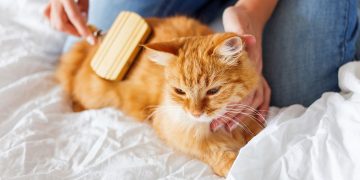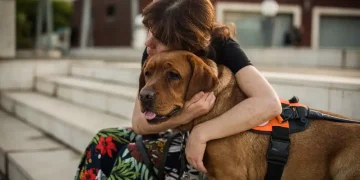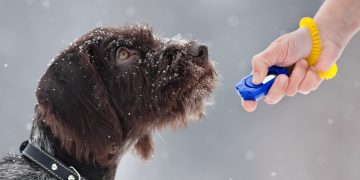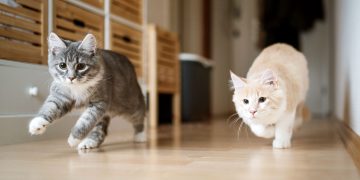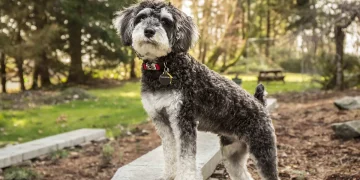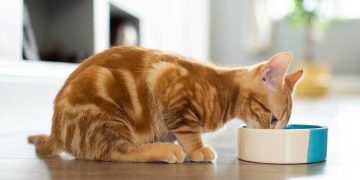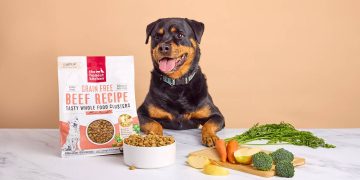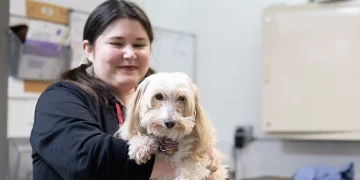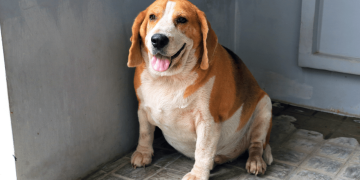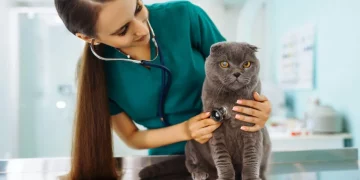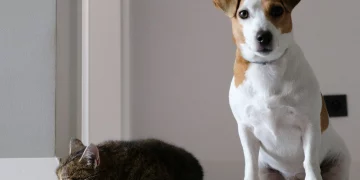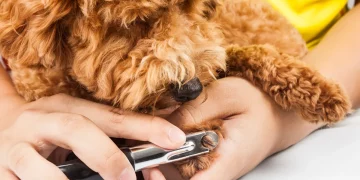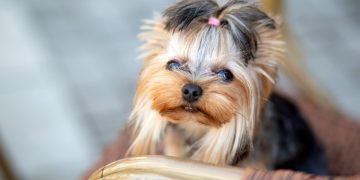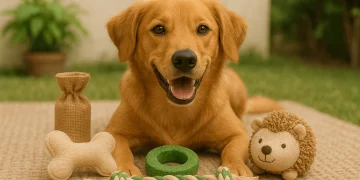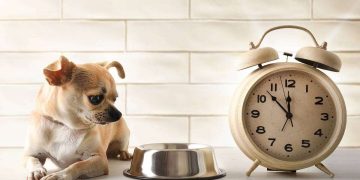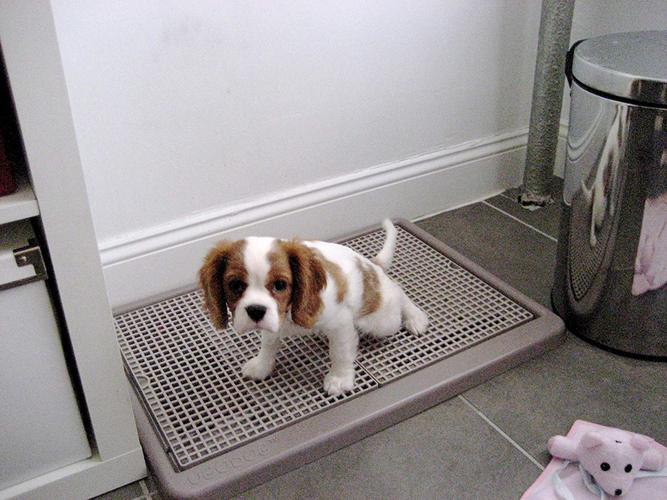Puppies are so cute and almost irresistible. But you also don’t want them peeing anywhere in the house. Follow these steps to ensure your puppy is properly potty trained.
First, Make a schedule
1. Understand that the puppy must go to the toilet frequently.
Young puppies have very small bladders and have yet to learn bladder control. The more water they drink, the more times they go to the toilet. So when potty training your puppy, you must learn to anticipate the unexpected.
2. Adjust the feeding time of the puppy.
What comes in must come out, and in puppies, this process of food coming in and out happens very quickly and frequently. Therefore, setting a regular feeding time has the benefit of helping control the puppy’s bowel movements.
3. Know how often your puppy needs to excrete.
Many puppies urinate every 30 minutes to an hour and defecate shortly after eating. Since you adjust the feeding time, you will have a rough idea of when it will poop. That leaves the problem of urination. Keep an eye on your puppy’s urination frequency so you can predict when it needs to go to the bathroom.
4. Understand the dog‘s “kennel instinct”.
Puppies are reluctant to soil their own kennel (like your home), this is called the kennel instinct. However, they are not born with this instinct, they must learn it (to make it more of a habit). Your training job in this area is to teach the puppy to recognize where the kennel is. Once the puppy has the concept of “kennel”, it will avoid excretion there, so as not to soil the kennel.

5. Choose a place for your puppy’s toilet.
The first thing to consider is whether the place is easily accessible. Since puppies need to go to the toilet early and often, the toilet you choose must be fairly close to the kennel. Toilets cannot be located one kilometer away and hidden in a pile of wood. A puppy’s toilet location may vary depending on where you live:
- If you live in a dense urban area (such as a high-rise apartment complex), it may be better to have the puppy’s toilet in your own bathroom or in an enclosed cubicle in the house.
- If you live in a less dense urban area, it may be better to have the puppy’s toilet outdoors. Remember to choose a convenient, time-saving and labor-saving location, after all, nature’s call is waiting for no one.
- If you’re too busy to give your puppy praise and attention, consider crate training. Puppies are very dependent and fully understand the safety and predictability of crate training.
Second,Teaching puppy the difference between right and wrong
1. When you take your puppy out for excretion, you need to strictly follow a certain order.
Pass the same door, use the same route, and pick the same spot every time. Use your knowledge of your puppy’s urination preferences to figure out when it needs to urinate and take it to its own toilet.
- The puppy will start to remember the smell of its urine and will soon be able to associate that place with the toilet.
- Use a toilet training pad if necessary. You can buy this product at a pet store, and its scent will attract your puppy to urinate on it. Put the toilet training pad in the designated area before letting the puppy urinate.
2. Give your puppy some encouragement every time he urinates in the right spot.
Praise and tout it with a cheerful, joyful voice. Puppies are emotionally motivated by pooping in the right place.
3. Be aware that you may need to pick up the puppy and take it to the designated urination site.
Many times, the puppy will not follow you to the designated location of their own free will. When that happens, you will need to take it there yourself. Get in the habit of picking up your puppy and taking it to a designated urination spot immediately when:
- After the puppy takes a nap or wakes up in the morning (puppies cannot urinate while sleeping, so they most likely have accumulated some urine after resting).
- After eating, drinking lots of water, or having fun.
- Whenever it whimpered in fenced quarters, dog crates, or outside designated toileting spots.
4. Learn how to change tactics when things don’t go according to plan.
Especially in the beginning, puppies usually urinate everywhere. You will run into it in the middle of urinating or even having a bowel movement. Knowing what to do in these situations will help.
Midway through urination:
- Walk up to the puppy and let it startle, not frighten. This may cause its valve to close; if it does, you can pick it up and take it to the designated urination spot to let it pass.
- Midway through a bowel movement: Since the dog can’t stop in the middle of a bowel movement, it’s not worth trying to stop it and forcibly taking it to the toilet. Let it finish a bowel movement, then try to move before it the next time.
5. If the puppy does urinate or defecate in the house, don’t yell at it.
The move didn’t help. Instead, you should learn to recognize the signals it sends before the “accident.” Common signs include circling or pacing and nose-to-ground. Remember these signs, and you’ll be able to take your puppy out for a rush and compliment him on his outside potty actions.
- If you must use negative reinforcement to train your puppy, try using the squirt bottle method. Fill a squirt bottle with water and add a little lemon juice. The smell of lemon juice can make your puppy unhappy. If you catch him urinating, just spray lemonade on his face. One or two sprays are enough, don’t spray multiple times.
- When you do, don’t be too rude to it. It probably thinks you’re playing with it and guesses that it’s doing well. Negative reinforcement should be used as an adjunct to positive reinforcement, but not as a substitute for positive reinforcement.
6. Walk the dog often.
Walking or running can help them relax their muscles and make it easier to go to the toilet.
7. Learn how to potty train when you’re not home.
If you can’t be with the puppy all day, you’ll need to make do with it. Here’s how to potty train a puppy when you’re not home.
- Enclose a play area for your puppy in a safe place (like you would enclose a puppy toilet area in the bathroom). The play area needs to be large enough so that the puppy has enough room to play. Line the entire bottom of the play area with paper towels.
- In the beginning, the puppy will urinate freely everywhere. You can’t control where it goes. Clean up the paper towels as soon as you get home, and spread more paper towels on the bottom of the play area.
- The puppy will gradually get used to the concept of toileting on a tissue. It will become a habit. You can slowly start reducing one tissue at a time, perhaps for a week. The concept here is that you limit where your puppy can go to the toilet by gradually reducing the amount of toilet paper in the play area.
- If your puppy ends up going to the bathroom without a tissue, it means you’re removing the tissue too quickly. Cover the play area with more paper towels, and try reducing paper towels more slowly.
Tips:
- When you can’t supervise the puppy, use a crate or other method of enclosing the puppy. The ideal size of a dog crate or enclosure should allow the puppy to lie down, but not so large that he uses the toilet on one end and sleeps on the other.
- If your puppy urinates on the carpet, use vinegar and water or a special cleaner to clean it up.
- Use a leash indoors too! You can even tie the leash to a belt loop or around your waist, which prevents the puppy from sneaking away and accidentally excreted in another room without you noticing.



